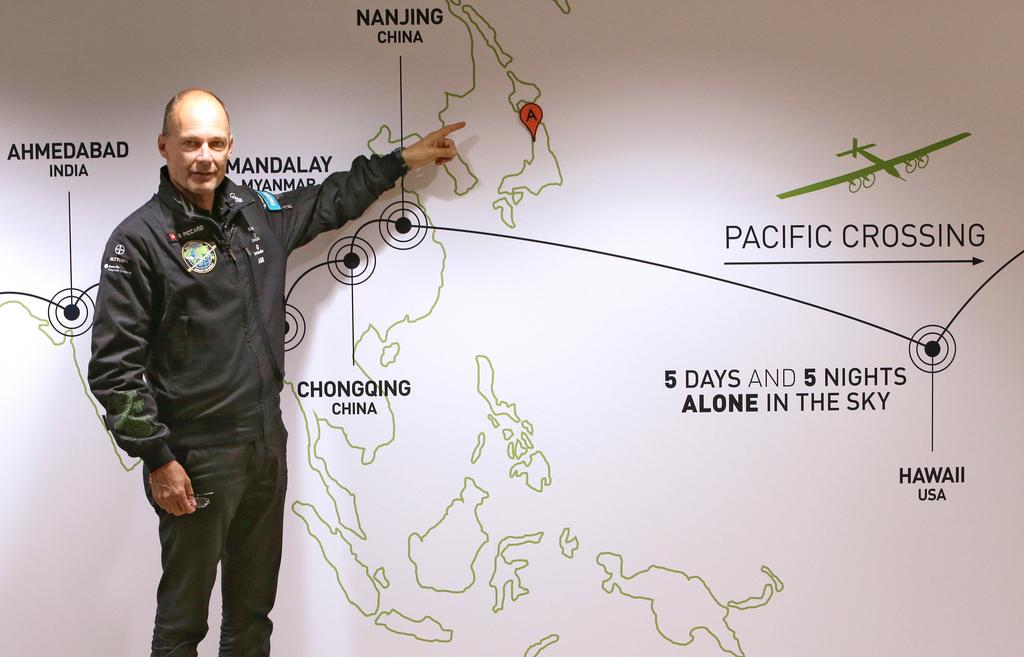Repair grounds Solar Impulse for a week, maybe longer

The Solar Impulse plane is undergoing repair work for light damage sustained after landing in Japan. But while the repair itself should only take about a week, the delay could push the project much farther behind schedule.
Flown by Swiss pilot André Borschberg, the plane, known as Si2, was on its way from Nanjing, China, to Hawaii, United States, when a cold front sent ground control in Monaco scrambling for a safe stopping point. The journey would have taken six days.
Because the landing at in Nagoya Airfield (aka Komaki Airport) was so unexpected, there wasn’t enough time to set up the mobile hangar before arrival. On the first night, there was a problem with the cover used to protect the plane, as Solar Impulse founder and pilot Bertrand Piccard explained.
Although the repair alone should take just about a week, it could force the Si2 to miss ideal weather flying “windows” in the meantime. As it is, the project is already behind schedule, and the long summer days won’t last indefinitely. Plus, Japan’s rainy season has just begun in the southern part of the country. From Nagoya, the trip to Hawaii should take five days.
In an interview with the Swiss News Agency this week, Piccard admitted that it might not be possible to finish the round-the-world trip this year. Already, it was very difficult to find suitable weather for take-off from China.
“This is not a race; the goal is to go around the world. It is better to do it in two years than not at all,” Piccard said, noting that this was not yet the plan. The idea is still to finish the trip by August 2015.
Asked whether the delays weakened the project’s renewable energy message, Piccard called the suggestion “ridiculous” as the Si2 can’t fly without sun. “It’s like criticising the fact that a car with an empty tank can’t drive.”
The impromptu visitors have been well received in Japan. Solar power has become increasingly popular there since the 2011 nuclear disaster in Fukushima.
A great honor to receive Governor Mr. Hideaki Ohmura and Ambassador of Switzerland Mr. Urs Bucher pic.twitter.com/RbXqKNsdDDExternal link
— SOLAR IMPULSE (@solarimpulse) June 3, 2015External link
In compliance with the JTI standards
More: SWI swissinfo.ch certified by the Journalism Trust Initiative
You can find an overview of ongoing debates with our journalists here. Please join us!
If you want to start a conversation about a topic raised in this article or want to report factual errors, email us at english@swissinfo.ch.